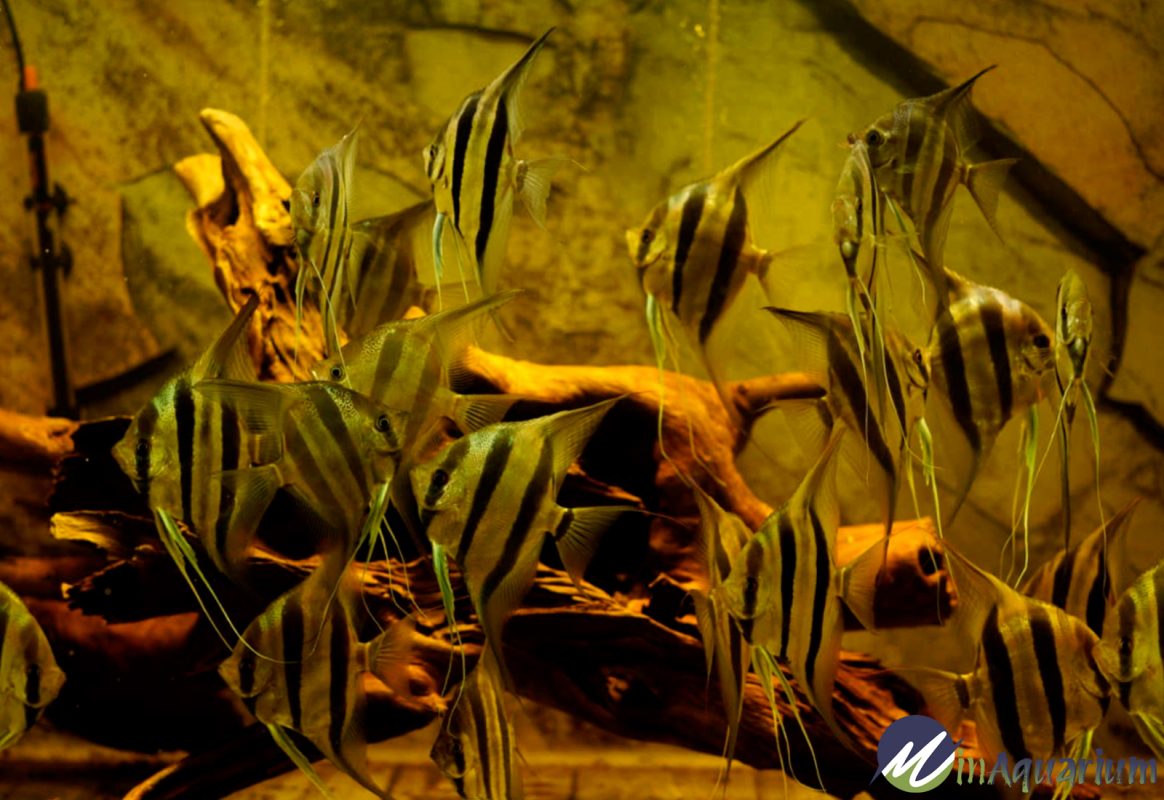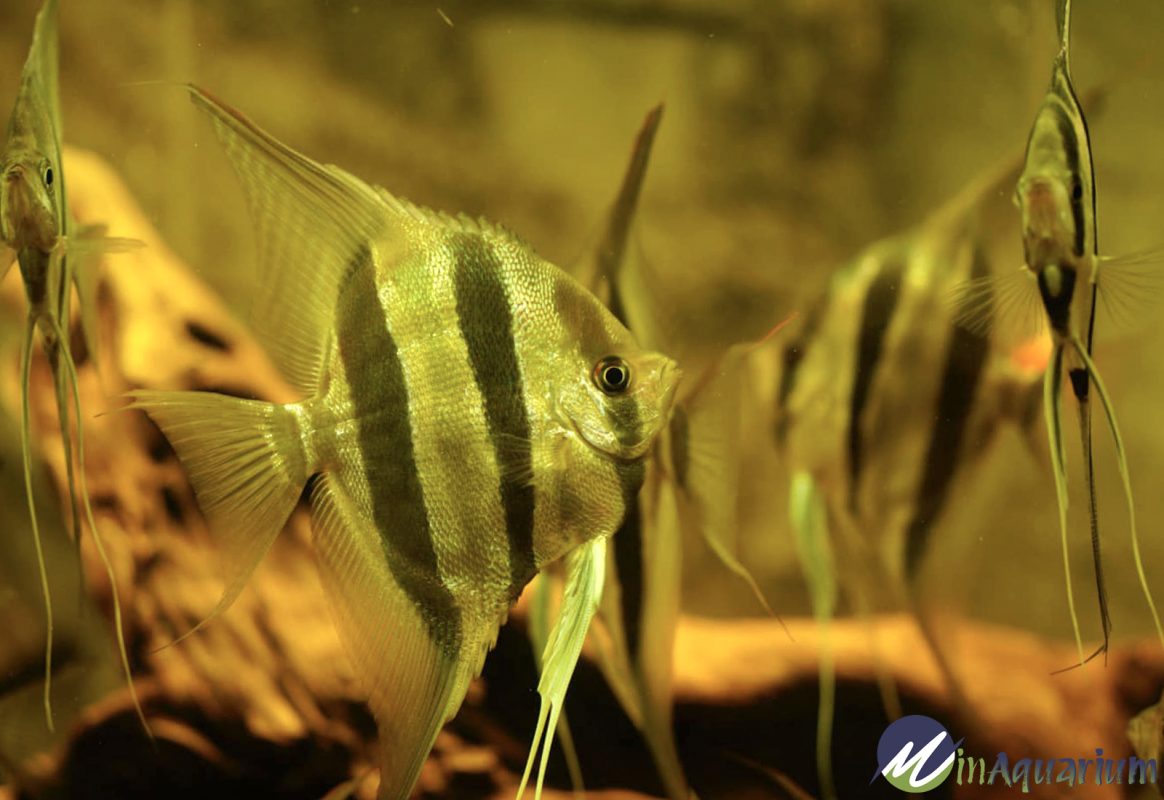Blogs
Pterophyllum Altum – The Enigmatic Altum Angel
As an esteemed aquarist with decades of experience, I delve into the captivating world of Pterophyllum altum, the enigmatic Altum Angel, a magnificent species that demands specialized care and attention. Prepare to embark on an immersive journey as we uncover the captivating traits, intricate habitat requirements, and breeding complexities of this alluring fish.
Overview
Taxonomy and Distribution
- Pterophyllum altum belongs to the Cichlidae family, renowned for their vibrant colors and diverse behaviors.
- Native to the upper Rio Negro and tributaries of the upper Rio Orinoco in Colombia and Venezuela, these fish favor slow-flowing rivers with soft substrates.
Physical Characteristics
- Size and Form: Altum Angels are the largest members of their genus, reaching heights of up to 15 inches. Their elongated bodies and elegant fins make them true underwater wonders.
- Coloration: Natural coloration features silver with brownish/red vertical stripes and red striations extending into the fins. Mature individuals may showcase red spotting and a blueish green dorsal overcast.
- Diagnostic Feature: True Orinoco altum specimens exhibit an acute incision or notch above the nares (supraorbital indention).
Habitat Requirements
- Water quality: Meticulous water maintenance is crucial. High temperatures (82-90°F), acidic pH (4.8-6.2), and soft water with virtually undetectable hardness mirror their natural environment.
- Vegetation: A densely planted aquarium with floating and broad-leafed plants replicates their shaded habitat, reducing stress levels.
- Decor: Bits of wood, such as mopani, driftwood, or bogwood, serve as overhanging branches, creating a sense of safety.
Dietary Needs
- Feeding challenges: Wild-caught Altums can be picky eaters and may require live foods to entice feeding.
- Dietary transition: A gradual transition to frozen or flake foods can be achieved with patience and perseverance.
Breeding
- Captivity challenges: Breeding Altum Angels in captivity is an arduous task, requiring highly acidic, soft water conditions and meticulous monitoring of the spawning process.
- Water requirements: pH levels of 4.0-4.5 and extremely soft water promote successful reproduction.

Availability and Acquisition
- Wild-caught vs. Captive-bred: Wild-caught Altums are more readily available, while captive-bred individuals are scarce.
- Seasonality: Availability in the aquarium trade is impacted by seasonality, affecting supply and demand.
- Reputable sources: Acquiring Altum Angels from reputable dealers or experienced breeders ensures authenticity and quality.
FAQs
- Q: Are Altum Angels difficult to keep in captivity?
- A: Yes, maintaining Altum Angels requires expertise and rigorous attention to water quality, habitat, and diet.
- Q: What is the average lifespan of an Altum Angel in an aquarium?
- A: With proper care and optimal conditions, Altum Angels can live for approximately 10 years in captivity.
- Q: What are the ideal tank mates for Altum Angels?
- A: Peaceful species with similar water requirements, such as Corydoras catfish or Rummy Nose Tetras, can be suitable companions.
- Q: Why is it challenging to breed Altum Angels in captivity?
- A: The species requires extremely acidic, soft water conditions and meticulous monitoring to stimulate successful spawning.
- Q: How do I differentiate between true Orinoco altum specimens and hybrids?
- A: True Orinoco altum specimens possess a distinctive supraorbital indention (notch above the nares) and lack yellow coloration.
Conclusion
Pterophyllum altum represents a captivating challenge for experienced aquarists. Their demanding habitat requirements and delicate nature mandate expertise and dedication. By carefully recreating their natural environment, providing tailored dietary considerations, and addressing their specialized breeding needs, these majestic angels can grace our aquariums with their ethereal beauty and enigmatic presence.
Key Takeaways:
- True Orinoco altum specimens exhibit a supraorbital indention.
- Maintaining Altum Angels in captivity requires meticulous water parameters and habitat replication.
- Live foods may be necessary to entice feeding in wild-caught specimens.
- Breeding Altums is an arduous task requiring highly acidic and soft water conditions.
- Acquiring Altum Angels from reputable sources ensures authenticity and specimen quality.- Feed multiple times a day, offering a variety of live and frozen foods.
- What is the best way to breed Altum Angels?
- Provide extremely acidic water conditions, pair selection, and specific environmental triggers to initiate spawning.
- How can I distinguish between a true Orinoco altum specimen and a hybrid?
- Look for the characteristic supraorbital indention, as well as the distinct coloration and pattern.

